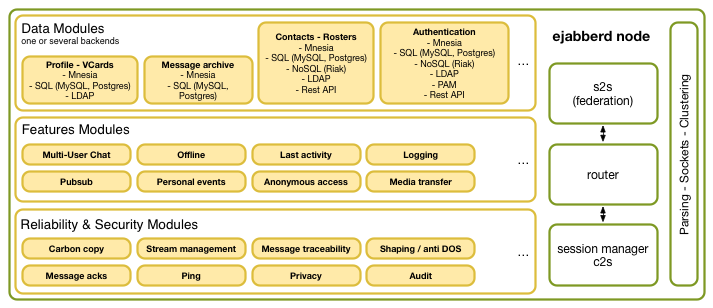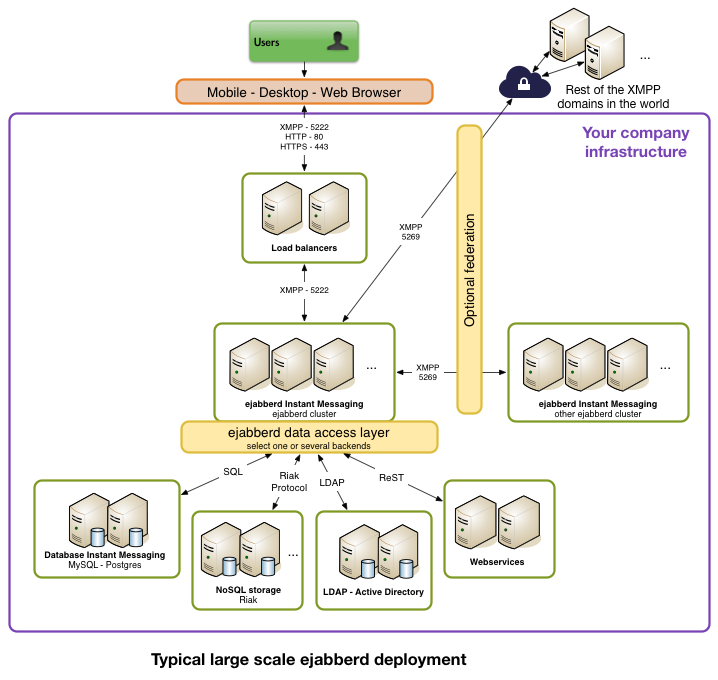Architecture¶
This section contains information to help your understand ejabberd architecture and will explain how to integrate ejabberd properly into your overall infrastructure.
Overview¶
ejabberd is a configurable system where modules can be enabled or disabled based on customer requirements. Users can connect not only from a regular PC but also from mobile devices and from the web. User data can be stored internally in Mnesia or in one of the support SQL or NoSQL backend. Users can be totally managed by your own backend through a ReST interface.
ejabberd internal architecture is organised around its router. Most of the other elements are plugins that can be adapted, enhanced or replaced to build a custom solution tailored to your needs.
ejabberd support a core concept of XMPP: Federation. Federation is a mechanism allowing different independent XMPP servers and clusters to communicate with each other.
Here is a high level diagram of ejabberd internal architecture:

Typical large scale deployments¶
Here is a diagram for a typical ejabberd large scale deployment. It can scale massively and rely on several back-ends.

Note that ejabberd ejabberd support a core concept of XMPP: Federation. Federation is a mechanism allowing different independent XMPP servers and clusters to communicate with each other. This is a purely optional layer, but it can help integrate with the rest of the world. It is also sometimes internally by companies to group users in subsidiaries or regions.
Virtual hosting¶
If you need to manage several small XMPP domains, ejabberd supports virtual hosting. It means you can host as many domain as you want on a single ejabberd deployment.
Instances can be made to be totally independent and invisible for each other if needed (or they can communicate as they would through federation).